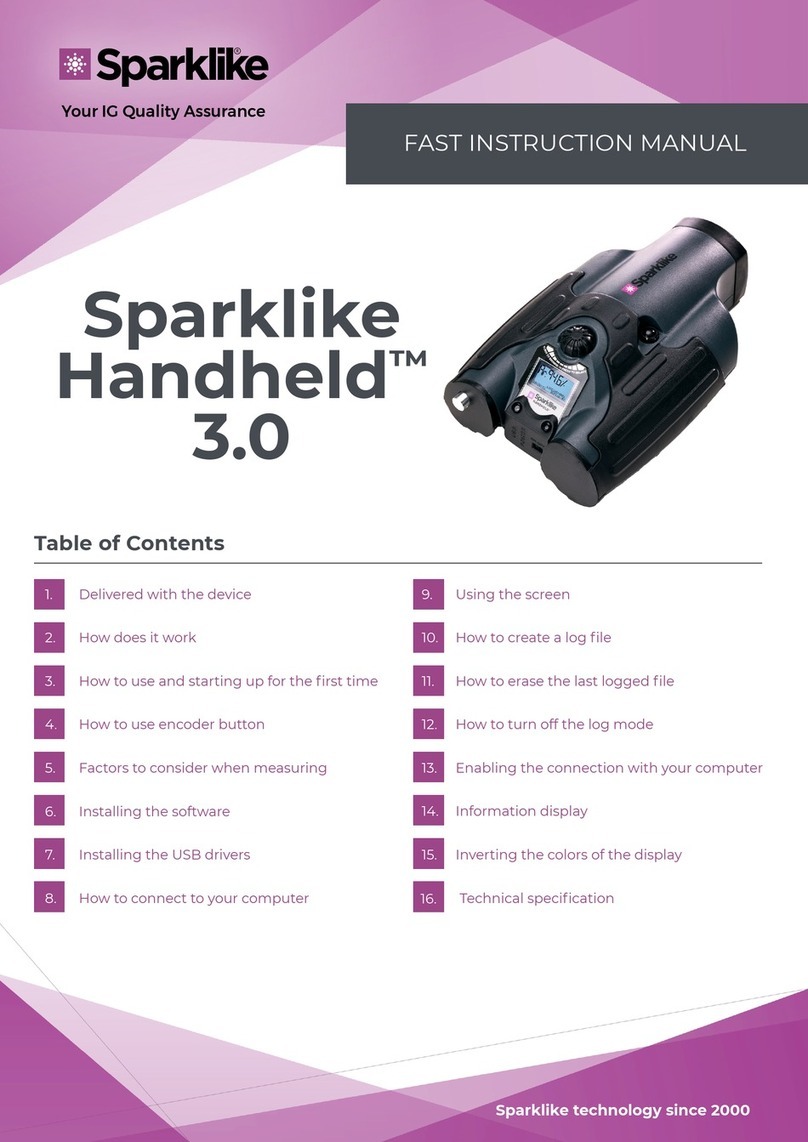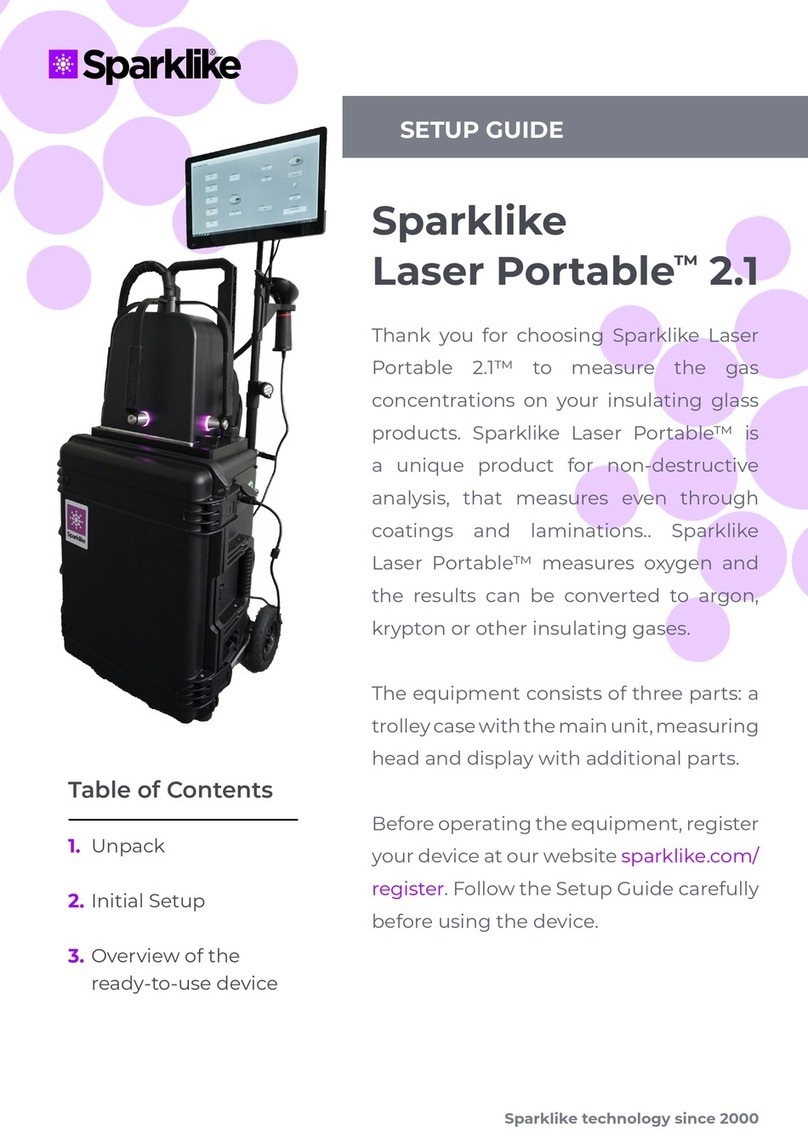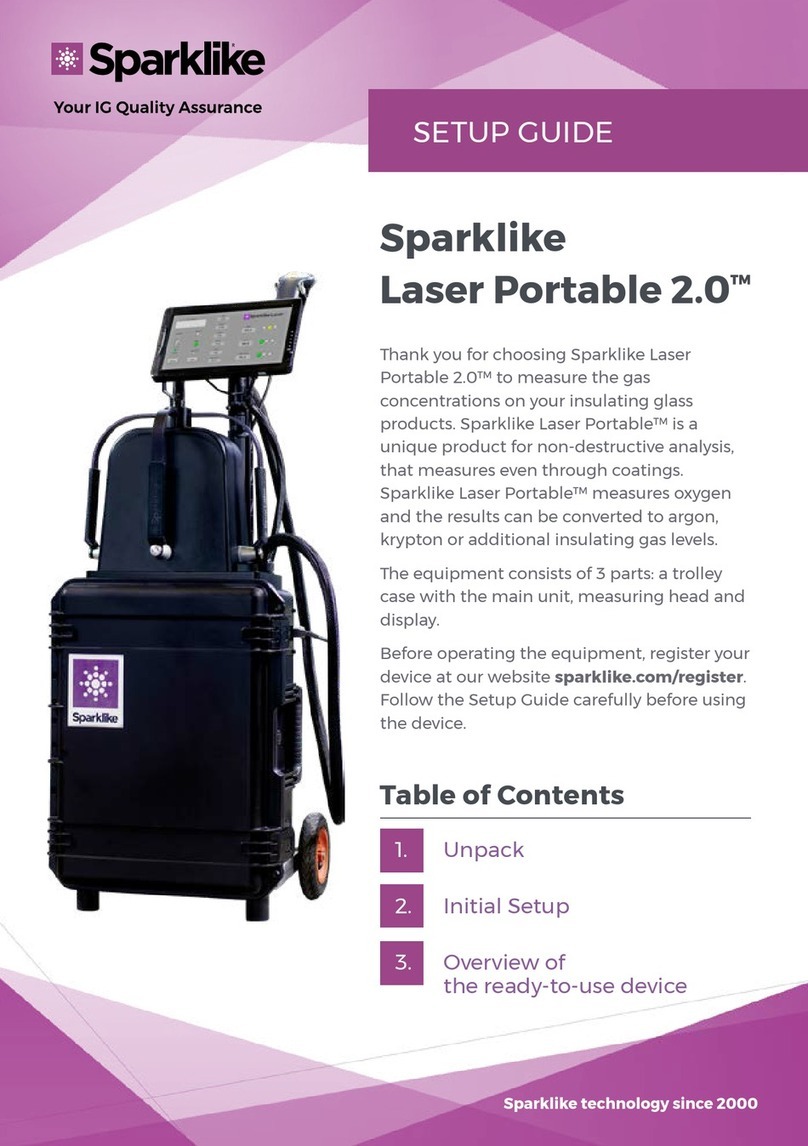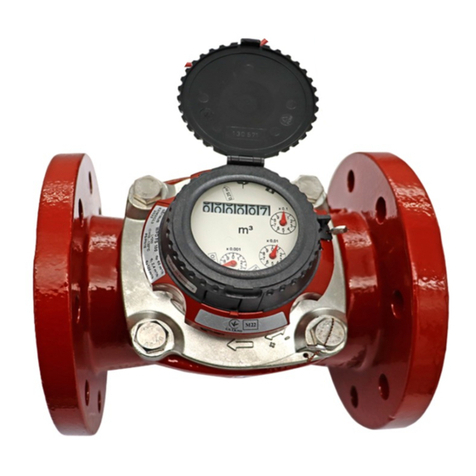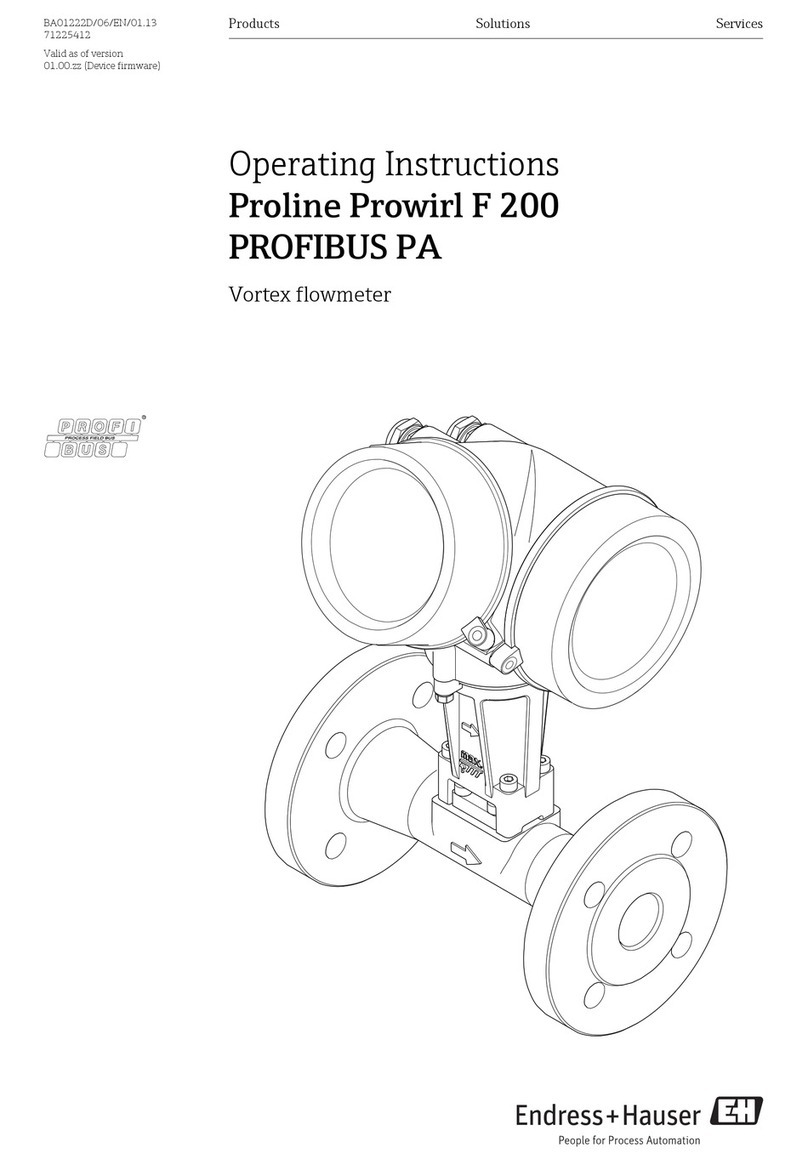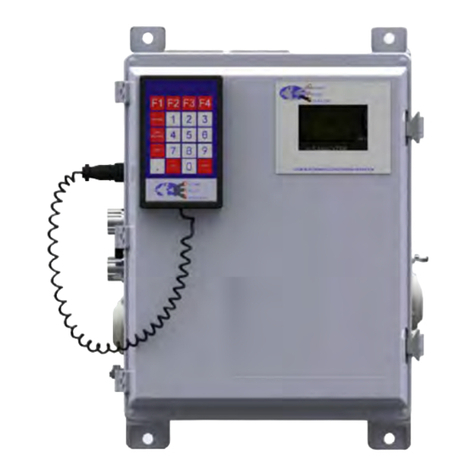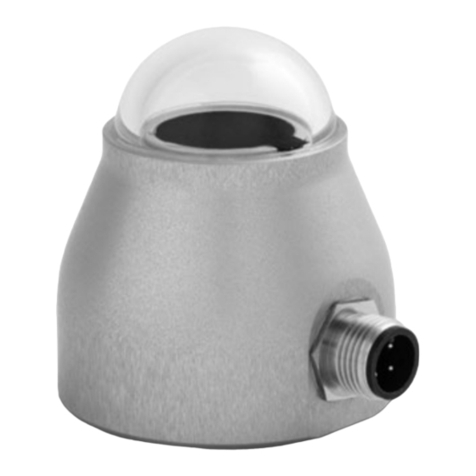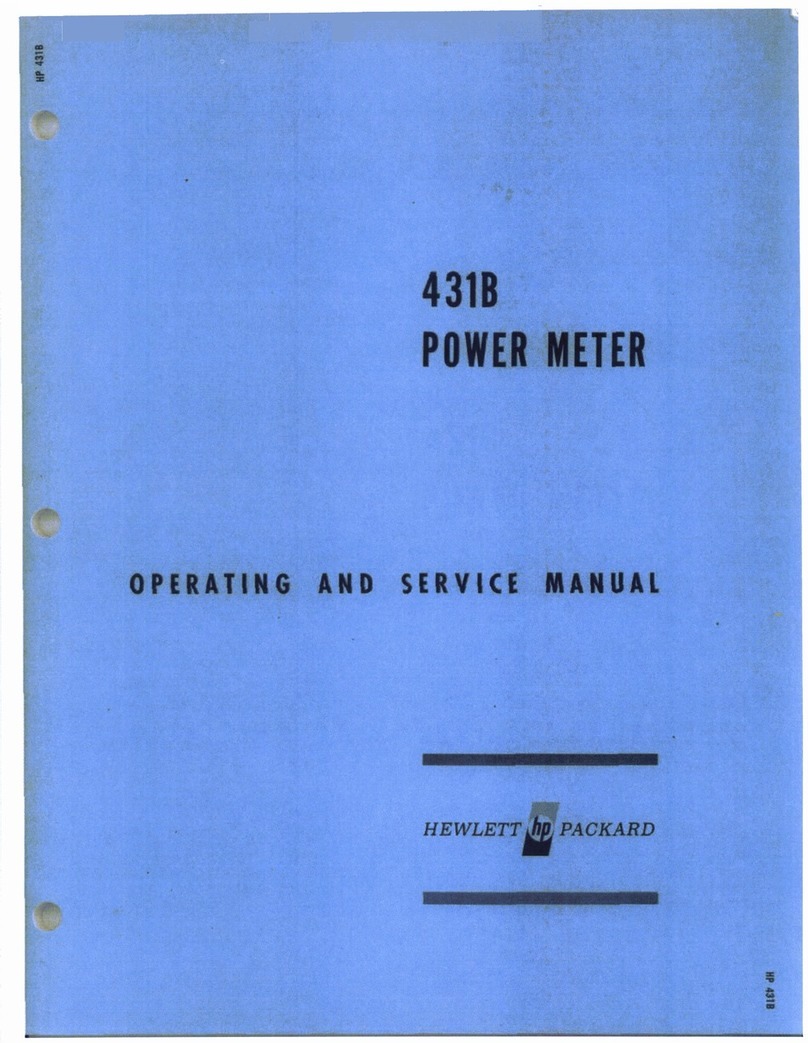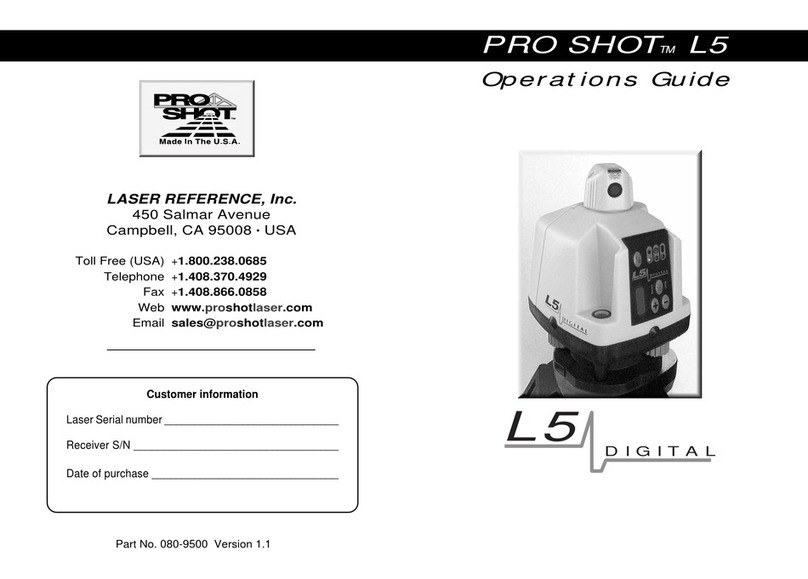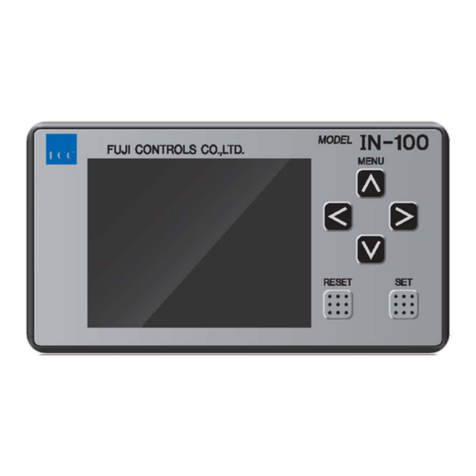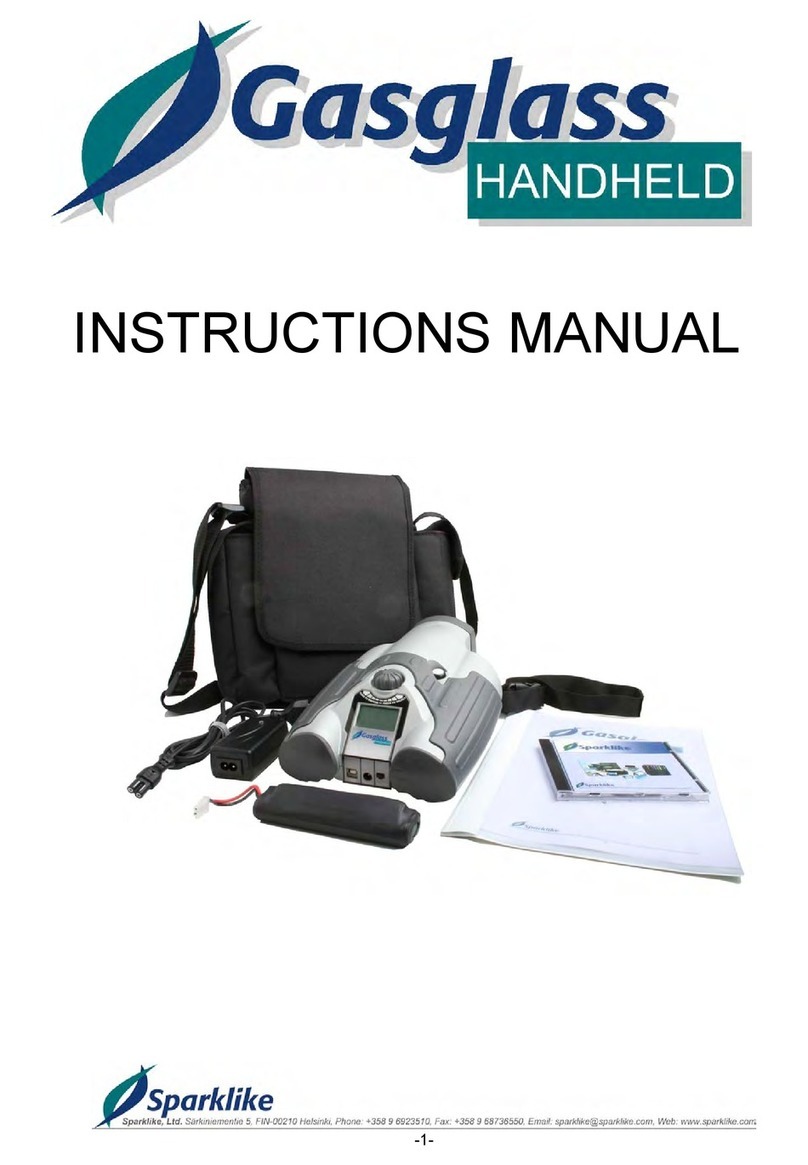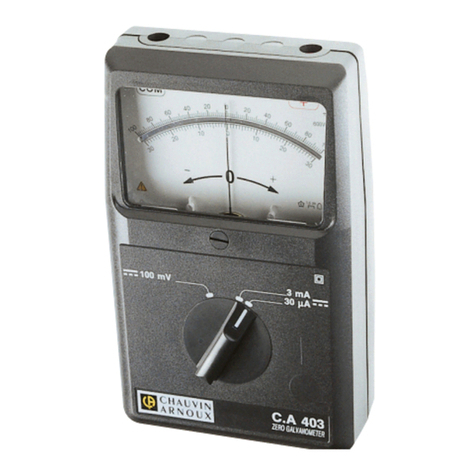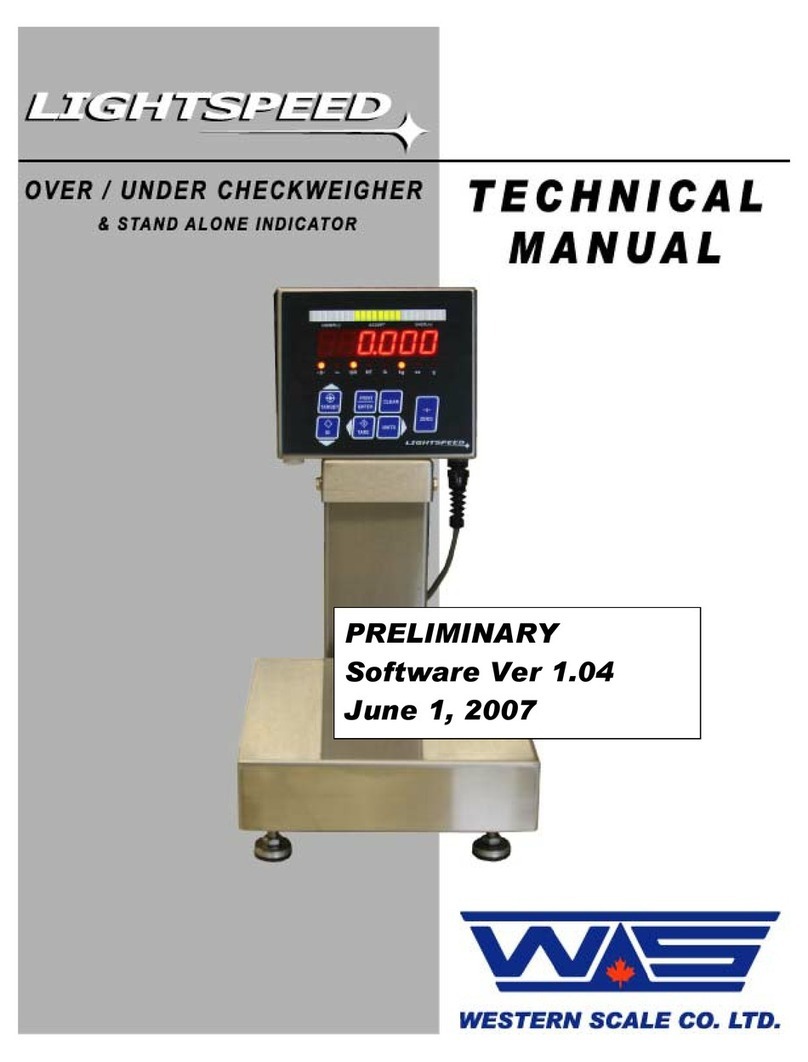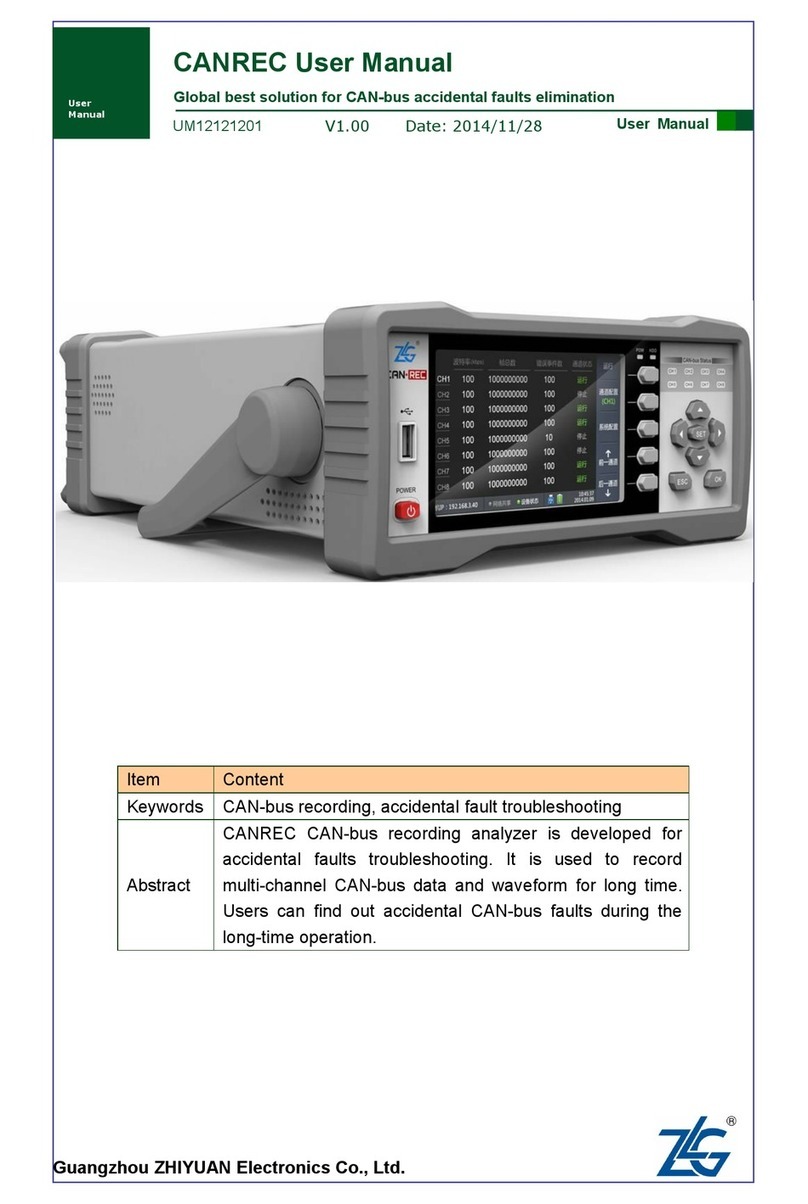2GASGLASS HANDHELD V2 — INSTRUCTIONS MANUAL
Contents
WARNINGS ............................................................. 3
2 Delivered with the Gassglass Handheld...................................4
3 How does it work?.....................................................4
4 How to use Gasglass Handheld.......................................... 5
4.1 Starting up for the first time ..........................................5
4.2 How to use the Gasglass Handheld encoder button ......................5
5 How to charge the battery.............................................. 6
6 Using the Gasglass Handheld LCD Screen........................................... 7
6.1 Start Up............................................................7
6.2 Logging and storing measurements. ...................................7
6.3 How to create a log file ..............................................8
6.4 How to erase the last logged measurement ............................8
6.5 How to turn off the LOG mode ........................................9
6.6 Display contrast .....................................................9
6.7 Gastype, Argon or Krypton ......................................... 10
6.8 Gasglass Handheld only calibrated for Argon. ......................... 10
6.9 Change calibration mode to Krypton ................................. 10
6.10 Change calibration mode back to Argon ...............................11
6.11 Enabling the PC Connection...........................................11
6.12 Setting time and date............................................... 12
6.13 Sensor test ........................................................ 12
6.14 Information display.................................................. 12
7 Things to consider when taking a measurement ...........................13
7.1 High voltage....................................................... 13
7.2 Light ............................................................. 13
7.3 In brief, factors to consider when measuring ........................... 14
8 How to perform a measurement .........................................14
8.1 Restrictions ....................................................... 16
9 Troubleshooting the Gasglass Handheld ..................................17
9.1 Errors when measuring ............................................. 17
10 How to connect to a PC ................................................18
11 How to install the Gasglass Handheld PC software (Win XP) ................19
11.1 Installing the USB <-> Serial Converter................................. 19
12 Installing the PC software .............................................24
13 How to find and set the right COM port from the PC. ...................... 28
14 How to use the Gasglass Handheld PC software ..........................30
15 Troubleshooting the PC software. ......................................34
16 Registering as a Gasglass user ......................................... 35
18 Checking the calibration .............................................. 37
18.1 Calibration check with pre-filled IG units ..............................37
18.2 Checking the calibration with premixed gas. ..........................39
19 Appendix A: Gasglass Argon Calibration ................................ 40
19.1 Accuracy of the device: .............................................40
20 Appendix B: Gasglass Krypton Calibration ................................41
20.1 Krypton Accuray Limits ............................................. 41
22 Appendix C: Technical specifications....................................42
23 Appendix D: Assurance of conformity ...................................43






















